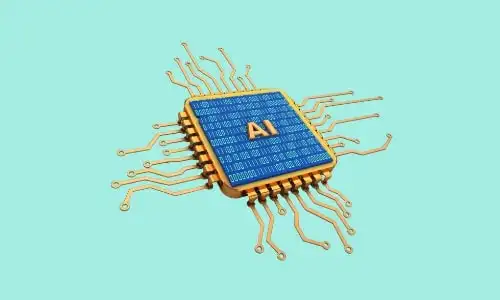
Learn the basics of
Artificial Intelligence
Take a conceptual look at Artificial Intelligence, covering topics like handling of data, preprocessing, model selection and model evaluation.
16,930
Graduates
All levels
Certified

Course details
MODULE 1
Diploma in Artificial Intelligence
MODULE 1
Diploma in Artificial Intelligence
1.History of Artificial Intelligence and Early Systems
Learn the influences of AI (Linguistics, Cognition, Gaming, Internet of Things, and Quantum Computing). Understand the theory behind Reinforcement Learning, Supervised Learning and Unsupervised Learning, and explore the history and development of AI.
2.Modern AI Systems and Applications
This lesson looks at the hardware and technological advances that made AI possible, and we'll understand how Artificial Intelligence is being used in mobility and autonomous vehicles, personalised medicine, retail and industry, and fintech.
3.Neuroscience and Neural Networks
Here we'll have an introduction to Neural Networks in AI. Explore the link between Cognitive Sciences and Neural Nets, differentiating between Artificial Narrow Intelligence (ANI) and General Artificial Intelligence (AGI). Develop the intuition behind Transfer Learning, Meta Learning, and Generative Adversarial Networks.
4.AI Explainability
Exploring fallacies of AI. Looking at biases in prediction and how they have already effected industry. We'll look at a brief overview on how to possibly combat Biases and irregularities in models.
5.Data and Use Cases
Understand how a Machine Learning Model can be implemented in Industry, as well as their different types of data. We'll also dive in to how AI & Machine Learning (ML) can benefit from ML operations.
6.Python Libraries
Python is one of the fundamental skills required by AI. Discover Python Libraries that are used, and what their functions are before knowing which libraries we'll use during this course and why.
7.Preprocessing and ML Models
The implications that can arise in data collection, and how problems are addressed, is important to understand. This leads to us to see how visualisation can assist in understanding the data.
8.Algorithms and Evaluation
Learn the importance of model tuning, and hyperparameter adjustment. We'll see where Evaluation is needed in the ML model and what the Evaluation process is useful for, along with a metric evaluation protocol in Regression and Classification Models. We'll also show how ML Algorithms are integrated into a model pipeline.
9.Statistics, Probabilities and Machine Learning Mathematics
Gain a basic understanding of evaluation metrics on regression, such as MSE, MASE, RMSE, and MAPE. Learn why vector and matrices play a pivotal role in ML. Finally, we'll see how calculus, and convolutions and Fourier Series have advanced Machine Learning.
10.What the NET?
Today we'll look into the capabilities of Natural Language Processing (NLP) and Computer Vision, exploring the current trends of Semantic Analysis, Named Entity Recognition and more. Understand the typical image acquisition process, as well as the flow of GANs, CNNs and RNNs.
MODULE 2
Intermediate in Artificial Intelligence
MODULE 2
Intermediate in Artificial Intelligence
1.ML Models
Analysing a regression and Classification model. Understanding when to use Classification or Regression. Walking through basic pipeline of both classification adn regression. Interpreting prediction made on both models and how to represent models visually. Understanding Decision Boundaries in Classification models.
2.Handling Data
Understanding what to look for when working with a dataset and how to practically asses data. Using Visualisation to intuitively understand the data.
3.Fitting a Model
Handling incomplete data, transforming data into a workable format. Categorical & Numerical Conversions.
4.Building a Regression Model (Demo)
Building a simple regression problem from scratch, looking at basic composition and model output to then be evaluated, fitting a regression model and visualising model.
5.Regression Model Evaluation (Demo)
Explaining of Loss Function, Understanding evaluation such as ROC Curve, Evaluating Regression Model built in previous exercise.
6.Building a Classification Model (Demo)
Use Iris dataset, show classification model being built, how to interpret model and visualisation of decision boundaries.
7.Classification Model Evaluation (Demo)
Evaluating using Confusion Matrix, CV - Scores and their interpretations.
8.Introduction to Deep Learning (Demo)
Create a simple predictive Neural Network.
